April’s Sweet Pea Inspires These Artists
By Adriana Abel
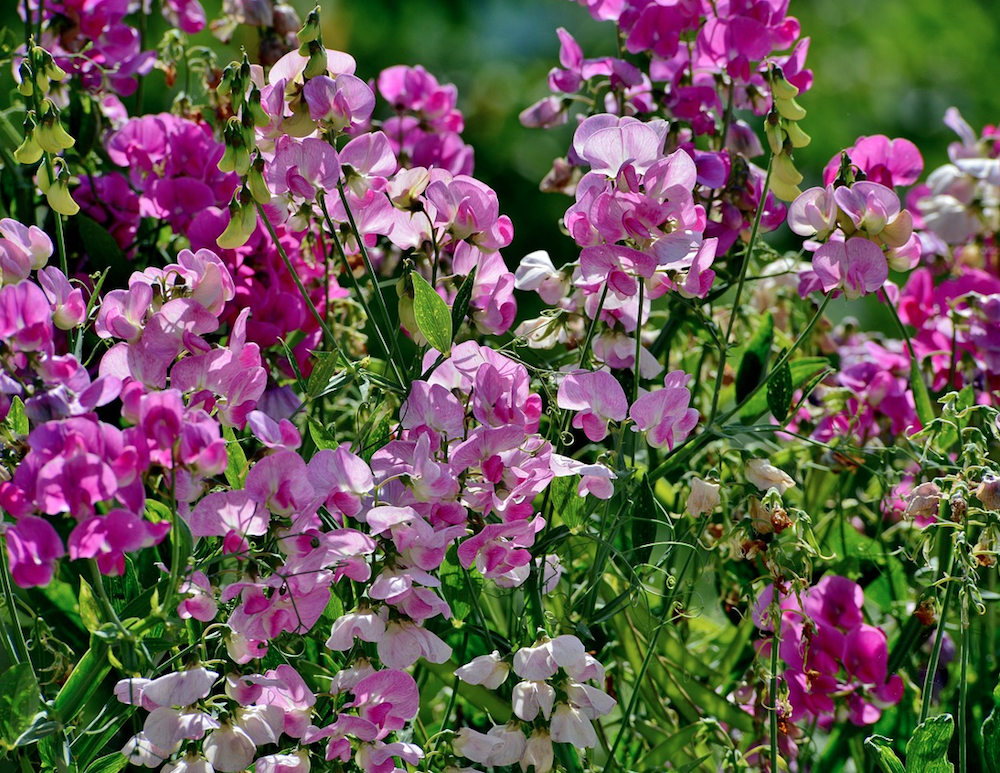
Flowers have inspired artists for centuries. Although my background focuses on contemporary art, where I’ve spent over a decade planting my roots in art through community, culture, gallery openings, museums, lectures, and art fairs, I’ve always been drawn to images and paintings of flowers.
In fact, while working alongside the artist Ron Agam, I was part of the process where he photographed flowers for two years and then saw him expand these flowers into 10-foot paintings.
However, he may not have focused his creative lens on the sweet pea – the flower of April – but fortunately, so many others have been amused and entranced by this delicate bloom. Here are my favorites for the month of April.

1. Georgia O’Keefe
I cannot talk about flower paintings without mentioning Georgia O’Keeffe. Arguably, one of the most famous artists known for flower paintings, she was particularly drawn to them for what she felt was the challenge they inherently posed to human observation. It was easy, she believed, to overlook the beauty found in the details of these small and delicate beauties. Later recalling her initial attraction to this motif in 1939, she said, “So I said to myself—I’ll paint what I see—what the flower is to me but I’ll paint it big and they will be surprised into taking time to look at it—I will make even busy New Yorkers take time to see what I see of flowers” I particularly enjoy looking at this “Yellow Sweet Pea” painting because of the sensuality and delicate nature it evokes. Yellow is also one of my favorite colors because it is very uplifting, and positive and represents a hopeful spirit.
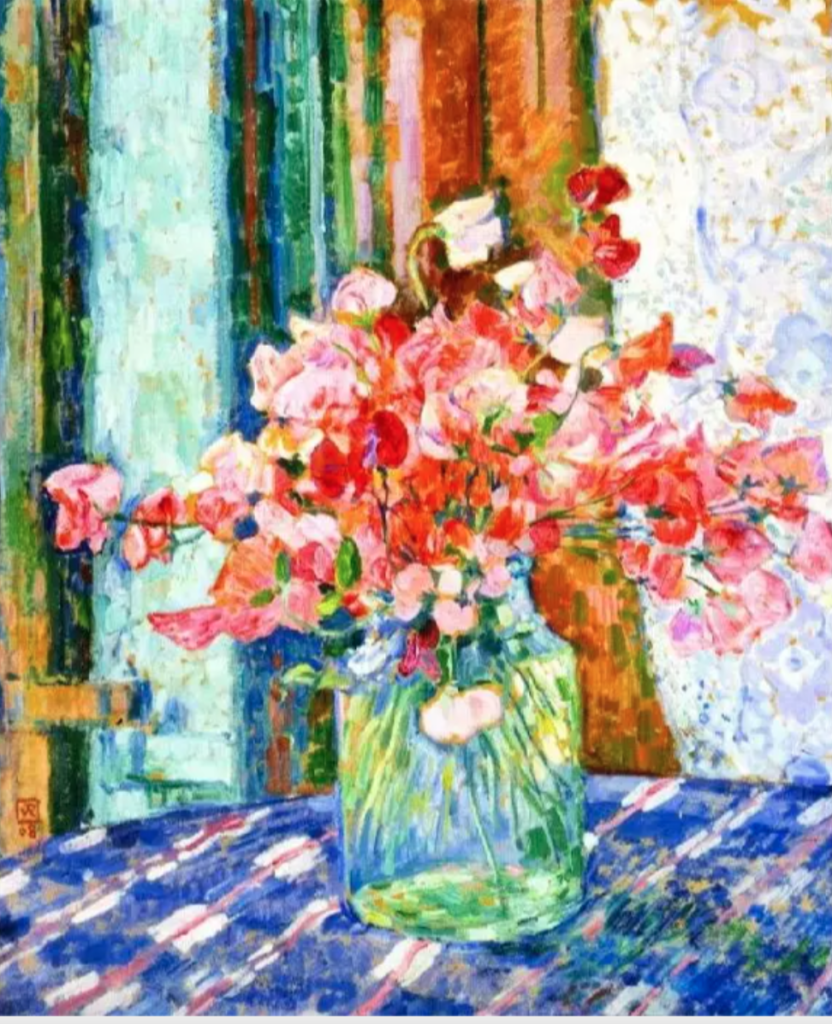
2. Theo van Rysselberghe
My second selection will go to “Sweet Peas, also known as Pois de Senteur” by artist Theo van Rysselberghe in 1908. Theo was a famous Belgian painter, and the co-founder of the avant-garde group of Brussels intellectuals, Les-Vingt. Upon his visit to Paris, he got acclimated with the artworks of Seurat, Signac, Cross and Pissarro and later turned to Pointillism himself, becoming the main leader of the style in Belgium, as well as one of Belgium’s most important artists of the fin-de-siecle period. After the death of Seurat, he gradually abandoned the technique and turned to a more realistic style. I particularly like this still-life painting of a glass filled with pink sweet peas because it symbolizes harmony, home and countryside. The vivid color palette brings life, energy, and a sense of belonging.
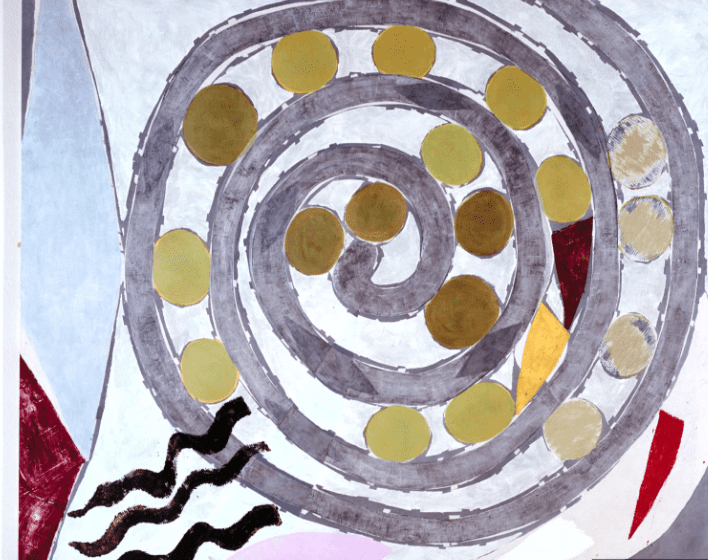
3. Jennifer Durrant
The third selection is “Sweet Pea Painting, 78-79” by British artist Jennifer Durrant. Her early work mostly consisted of small drawings, but after her travels throughout Canada and the United States, she had a major turning point. She has attributed the bolder and more confident-looking paintings she started on her return to the general sense of exhilaration and optimism the trip had given her. Sweet Peas was one of these artworks. “I paint my pictures with the canvas stretched flat on the floor, viewing them from the top of my steps, and I see the painting frontally/head on, only when it feels whole or I cannot choose what to do,” Durrant says. The artist has pointed out that, as her paintings are not concerned with the straightforward depiction of external events, her choice of an image, color or texture may initially be prompted by her experience as recorded in her notebooks, but when she begins to paint, the needs of the painting itself dictate the way these elements are eventually combined, amended or organized. I chose this painting because it depicts an interpretation of the flower. It shows that we all have different perceptions of reality and our imagery is very unique.
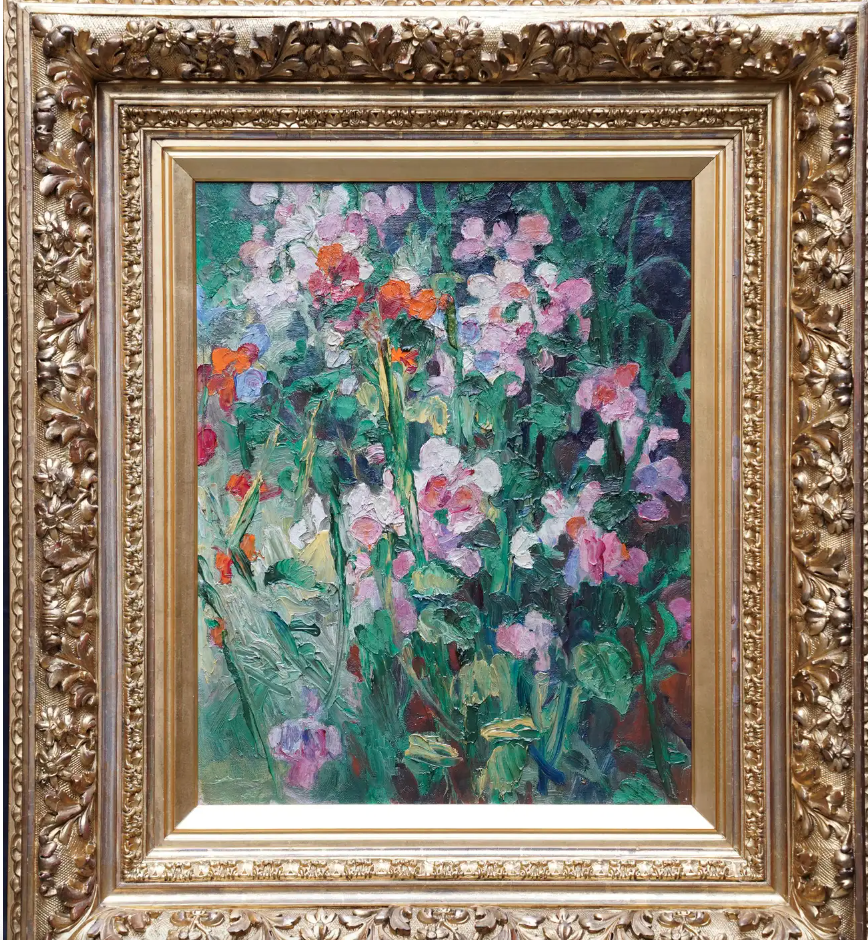
4. Gerald Spencer Pryse
For the fourth painting, I chose “ Sweet Pea Flowers” 1930, by Gerald Spencer Pryse. Gerald was primarily remembered as a lithographer in the tradition of Brangwyn (lithographs that enable artists to create prints similar to sketches and drawings) and later rose to fame as a primary War Artist. In fact, during the Great War, the Queen of Belgium gave him a large Mercedes to drive around and some huge lithographic stones! Perhaps as a result of his lithographic work, Pryse had a very assured style, a prerequisite for work on large-scale oil paintings. In this painting, I like the vibrancy of the color palette and the natural raw composition of flower placement.
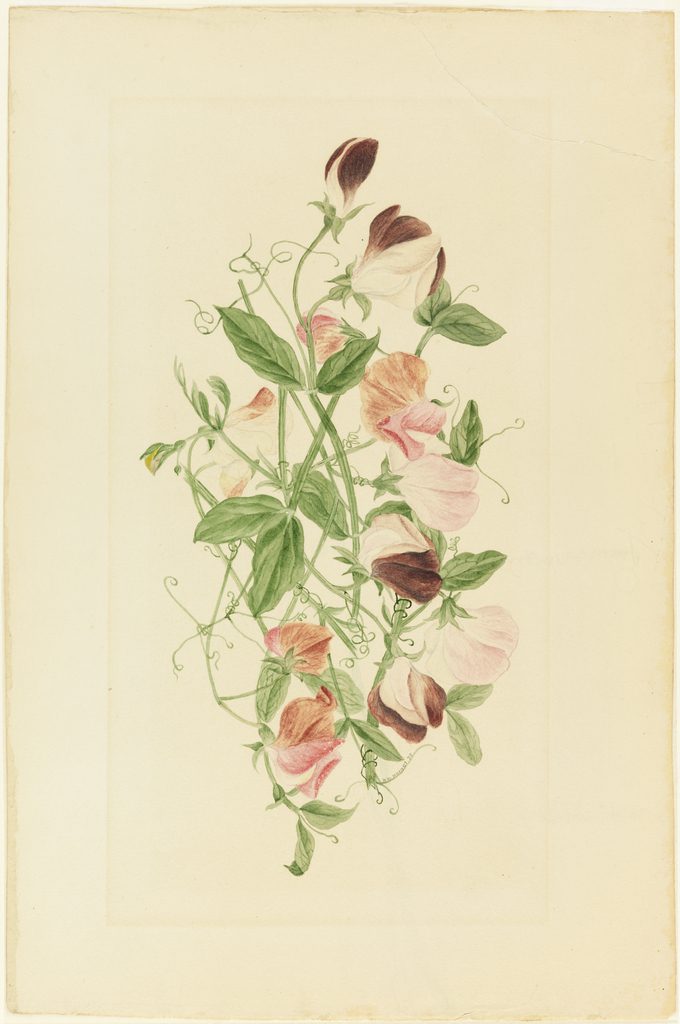
5. Henrietta Maria Benson Homer
Lastly, I present “Sweet Peas” by Henrietta Maria Benson Homer exhibited at the Brooklyn Art Association in April 1876. Watercolors, as a medium, in the early 1870s had little respect due to their association to ladies who designed embroidery and china patterns. Founded in 1866, the American Watercolor Society was slowly gaining traction and helped bring critical attention and patronage. Watercolors offered a way for the younger artists to make exhibitions and make a name for themselves as Henrietta did. Winslow Homer would go on to become the best-known American watercolorist. I like this artwork for its close study and depiction of nature, careful placement of plants, and the overall composition of blooms and leaves.
Sweet Pea holds a symbolic meaning of blissful pleasure. These blooms leave a positive feeling and express gratitude. Since Sweet Pea is available in almost any flower color of the floral rainbow. Plant them, use them, be inspired by them and maybe host your own painting party. I look forward to sharing flowers and paintings with you next month and will leave you with a quote from Sweet Pea admirer and poet John Keats. “A thing of beauty is a joy forever. Its loveliness increases. It will never pass into nothingness.”
